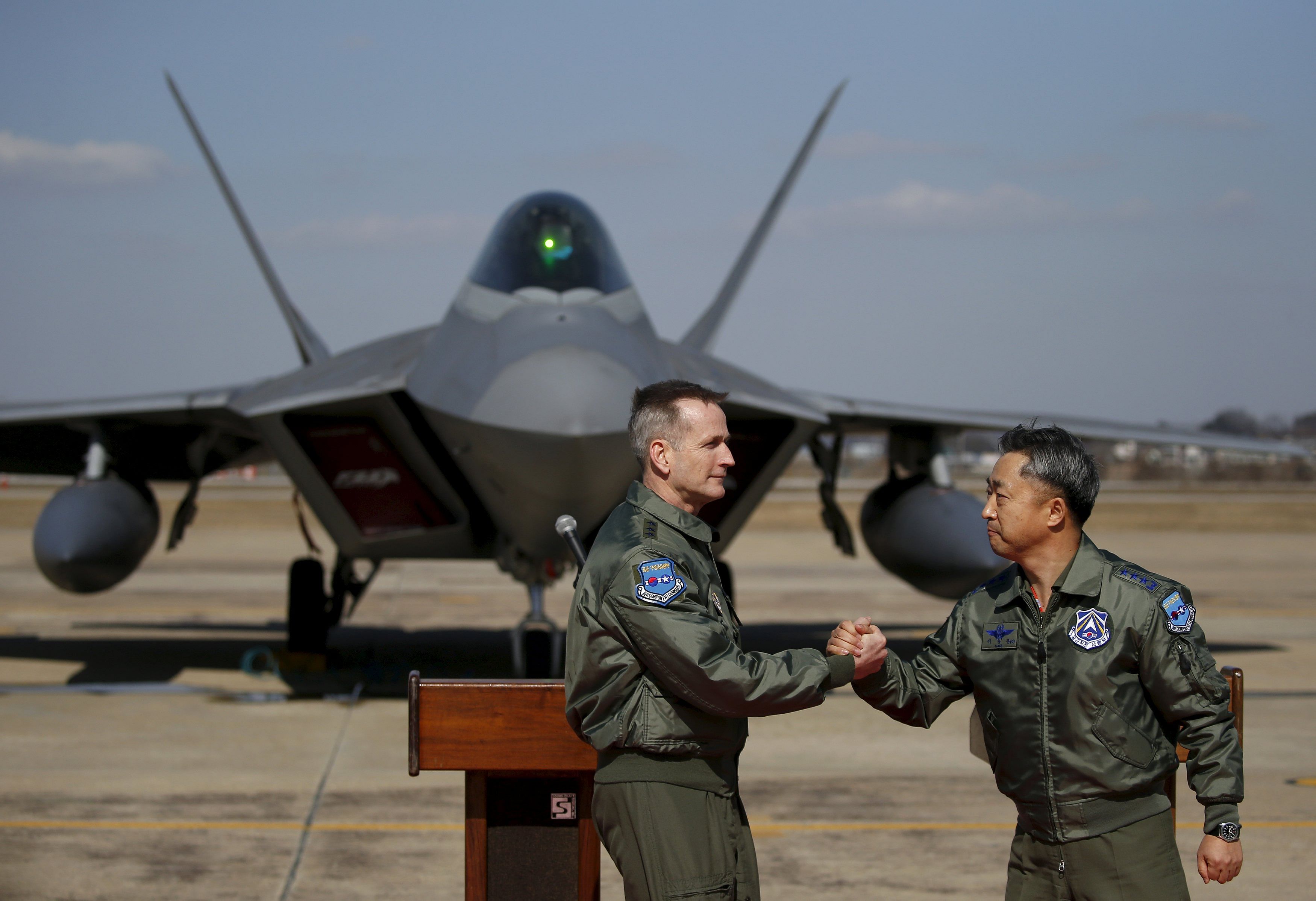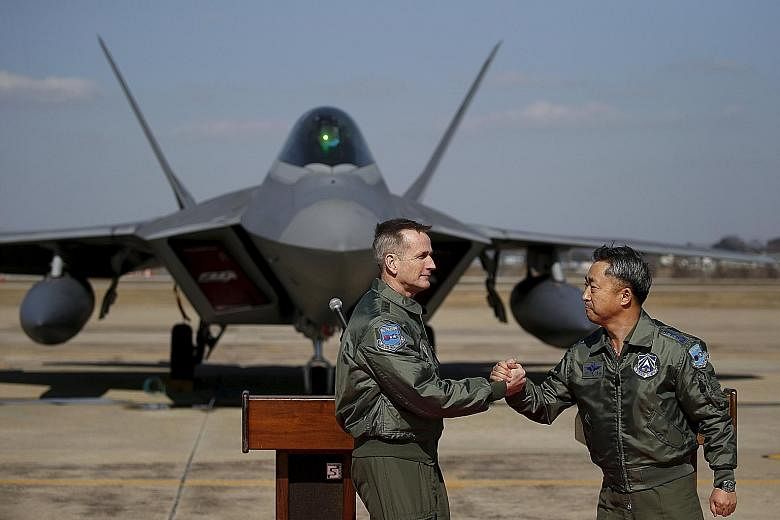The United States spends billions of dollars each year on military bases in Japan and South Korea, and Republican presidential front runner Donald Trump has repeatedly characterised this as foreign allies taking advantage of American largesse.
But experts point out that the bulk of American defence spending does not go to Asian countries, and Japan and South Korea do shoulder a large part of the cost of hosting US military personnel.
Experts point out that apart from the geopolitical consequences of withdrawing troops, including unravelling years of regional security cooperation, such an action would save little money, unless the plan is to dismantle entire units.
Dr Michael Green, senior vice-president for Asia and Japan chair at the Centre for Strategic and International Studies, says the US would "lose money by closing bases in Japan and Korea - if we still cared about keeping the Pacific Ocean free from threats".
For example, the US "would need four carriers steaming from the West Coast to have the presence we now get from one in Japan", he said.

At the most recent Republican town-hall event hosted by CNN last Tuesday, Mr Trump said: "When you see all of the money that our country is spending on the military, we're not spending it for ourselves; we're protecting all of these nations all over the world."
While maintaining a secure Asia has some benefit, he said, it is "not big enough to bankrupt and destroy the United States".
According to a 2013 report by think-tank Rand Corp, South Korea hosts 28,500 US military personnel, while Japan hosts 35,000.
Mr Trump also told the New York Times in an interview published last week that if countries such as Japan and South Korea did not pay more of the bill to have US forces around, he would be willing to withdraw them.
And instead of having countries turn to the US for protection, he was open to letting Japan and South Korea acquire nuclear weapons for defence against North Korea.
-
DEPLOYMENT COSTS
-
The US, which expects to place 60 per cent of its Air Force and Navy forces in the Asia-Pacific region by 2020, has 35,000 troops in military bases in Japan and 28,500 in South Korea. Here's how much it costs the US taxpayer to keep them there. The US Pacific Command announced last year four biggest construction projects in the Pacific since the end of the Cold War.
Cost to Japan and South Korea: US$30 billion (S$40.5 billion)
Cost to US: US$7 billion Expansion of mega-base Camp Humphreys in South Korea
Cost to South Korea: US$10 billion
Cost to US: US$800 million Okinawa's US$12.1 billion Marine Corps air station expansion project
Japan: 100 per cent
Cost of keeping US troops in Japan and South Korea in 2002
Japan: 75 per cent of the cost
South Korea: 40 per cent of the cost
Last Friday, US President Barack Obama chided Mr Trump for his views, saying his comments reflected a person who "doesn't know much about foreign policy, or nuclear policy, or the Korean peninsula, or the world generally".
While Mr Trump makes it seem like the US is bankrolling its allies, a US Department of Defence report from 2004 shows that in 2002, Japan already shared 75 per cent of the cost of basing US military personnel there, while South Korea picked up 40 per cent of the tab.
In terms of construction projects, for example, the US Pacific Command announced last year that US$37 billion (S$50 billion) would be spent on "new capability and infrastructure" in the Asia-Pacific region, and Dr Green points out that US$30 billion of that sum will come from Japan and South Korea.
When comparing the cost of running an overseas base to one in the US, the Rand report showed that "the fixed costs per base do not appear to be systematically higher overseas, with the exception of the Air Force bases". However, the report does suggest that having fewer and larger bases could be more cost-effective.
Mr James Schoff, senior associate of the Asia programme at the Carnegie Endowment for International Peace, said: "The general rule of thumb is that the two allies pay a little more than half the costs, and there is only a 20 per cent or so premium to having US bases over there instead of in California or North Carolina."
He estimated that the US spends US$10 billion annually on bases in Japan and South Korea, but stressed that this would include everything from maintenance and salaries to electricity and mowing the lawn. Still this is a fraction of America's annual defence budget, which is about US$600 billion. If there were to be "modest reductions in the Asia-Pacific region, including some of the Marine Corps forces and an Air Force base and wing", the Rand report estimates "some savings - contributing roughly equal amounts of up to US$450 million per year".
But experts in general do not believe this is a cost worth saving.
Dr Green said it would be odd for the US to damage its alliances in the region at a time when Asia is not getting any safer, while Mr Schoff said a Trump presidency would be "a disaster" if he followed through on his positions.
"The region would be less secure and less prosperous as a result. We all lose in this scenario, because we begin to dismantle the institutions and motivations for cooperation that we've built up over decades."


